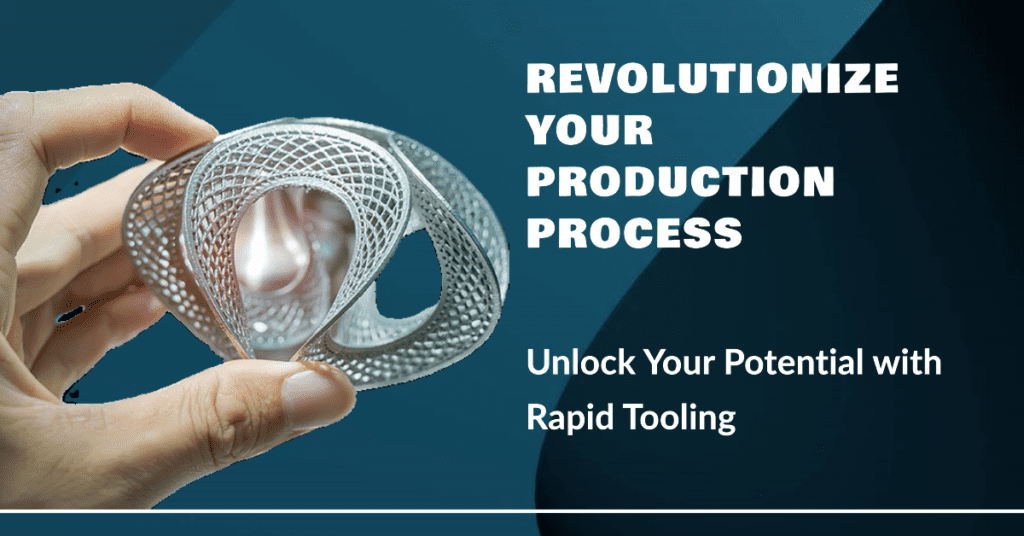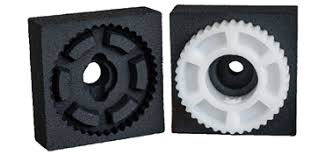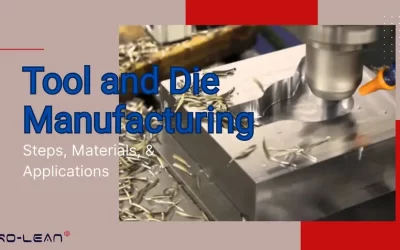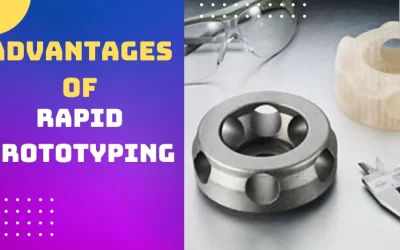
The manufacturing sector is constantly evolving, thanks to the advancements in technology. Among these advancements, rapid tooling is a revolutionary technique that has transformed the way manufacturers produce parts and components. Rapid tooling involves the use of rapid prototyping techniques to create the mold and die components, thereby significantly reducing the time and cost involved in the production tooling process.
This article delves deep into the world of rapid tooling, its applications, benefits, and how it is shaping the future of manufacturing.
What is Rapid Tooling?
Rapid tooling, commonly abbreviated as RT, is a groundbreaking process that leverages rapid prototyping techniques to manufacture molds and dies. These molds and dies are then utilized in the manufacturing process to fabricate parts and components. Traditional methods of creating molds and dies involve time-consuming and costly processes such as machining or Electrical Discharge Machining (EDM). However, with the advent of rapid tooling, these essential components can be produced much quicker and at a fraction of the cost.
Rapid tooling is not a single technique but a collection of methods and processes that utilize rapid prototyping technologies to produce tooling quickly. Rapid prototyping is a group of techniques used to fabricate a scale model of a physical part or assembly using three-dimensional computer-aided design (CAD) data. This is often achieved through additive manufacturing, more commonly known as 3D printing. When these rapid prototyping techniques are applied to tooling, the process is referred to as rapid tooling.
There are two main categories of rapid tooling:
- Indirect Rapid Tooling: This process involves the use of a master model to create a mold. The master model is created using rapid prototyping techniques, and then a mold is created around the master model using traditional molding methods, such as silicone rubber molding or investment casting.
- Direct Rapid Tooling: This process involves the creation of molds and dies directly from the CAD data without the need for a master model. Various methods, such as laser sintering, electron beam melting, or direct metal deposition, can be used to create the molds and dies.
What Are the Different Types of Rapid Tooling?

General tree diagram of rapid tooling types
Rapid tooling is not a one-size-fits-all process; it encompasses various methods, each tailored to specific manufacturing needs. Understanding these distinct types of rapid tooling can greatly assist manufacturers in making informed decisions regarding their production processes.
- Indirect Rapid Tooling Indirect rapid tooling involves the creation of molds using an intermediate pattern or master model. This master model is fabricated using rapid prototyping techniques, such as stereolithography (SLA) or fused deposition modeling (FDM). The molds are then generated around this master model using traditional molding methods.
This method is particularly suitable for producing limited quantities of parts. However, it’s important to note that the molds created through indirect rapid tooling might have limitations in terms of their lifespan and durability.
- Direct Rapid Tooling: Direct rapid tooling, on the other hand, eliminates the need for an intermediate master model. It involves the direct fabrication of molds and dies from the CAD data of the desired part. Various additive manufacturing technologies, such as selective laser sintering (SLS) or direct metal laser sintering (DMLS), can be employed to create these tools.
While more expensive than indirect rapid tooling, this method is ideal for producing larger quantities of parts with high precision. The molds and dies manufactured using direct rapid tooling are often more robust and can endure the demands of high-volume production.
- Soft Tooling Soft tooling, also known as prototype tooling, is a rapid tooling method that focuses on speed and cost-effectiveness. It involves the creation of molds from materials such as epoxy or silicone. While these molds might not last as long as traditional metal molds, they are well-suited for short production runs and prototyping purposes.
Soft tooling provides a quicker turnaround time and allows manufacturers to make adjustments to the mold design without substantial expenses.
- Hybrid Tooling: Hybrid tooling combines the strengths of traditional tooling and rapid tooling. It involves using rapid tooling methods to fabricate inserts or components that are then integrated into a traditional mold base. This approach can help manufacturers achieve a balance between the speed and cost benefits of rapid tooling and the durability of traditional tooling.
- Composite Tooling: Composite tooling is employed when producing parts from composite materials. It involves using rapid tooling techniques to create molds for composite layup, where layers of reinforcing fibers are impregnated with resin. These molds are essential for producing lightweight and high-strength components used in industries such as aerospace and automotive manufacturing.
Table: Advantages of Each Method
| Rapid Tooling Method | Advantages |
|---|---|
| Indirect Rapid Tooling | Cost-effective for small quantities & Relatively fast production |
| Direct Rapid Tooling | High precision and accuracy & Suitable for larger production volumes |
| Soft Tooling | Quick turnaround time & Cost-effective for short runs and prototypes |
| Hybrid Tooling | Balances speed and durability & Integrates with existing tooling processes |
| Composite Tooling | Produces lightweight and high-strength components & Ideal for composite materials |

Examples of direct & indirect rapid tooling
It’s worth noting that the selection of the appropriate rapid tooling method depends on several factors, including the complexity of the part, required tolerances, production quantity, material properties, and budget constraints. Manufacturers must carefully evaluate these factors before deciding on the most suitable method for their specific project.
Applications of Rapid Tooling
The versatile applications of rapid tooling span across various industries, revolutionizing how products are developed, prototyped, and manufactured. From creating prototypes to facilitating short-run and mass production, rapid tooling has become an indispensable tool for modern manufacturing.
1. Prototyping
One of the primary applications of rapid tooling is in the realm of prototyping. Traditional prototyping methods could be time-consuming and costly, often delaying the product development process. Rapid tooling streamlines this stage by quickly producing molds and dies that enable the creation of functional prototypes.

Prototype created with rapid tooling
Engineers and designers can assess the physical attributes of the product, test its functionality, and identify any design flaws before proceeding to mass production. This ability to iterate and refine prototypes in a shorter timeframe significantly accelerates the product development cycle.
2. Short-Run Production
Rapid tooling proves to be highly beneficial for short-run production scenarios. In situations where manufacturers require a limited number of parts, using traditional tooling methods might not be cost-effective due to the time and expenses associated with creating complex molds.
Rapid tooling offers a solution by enabling the fabrication of molds at a fraction of the time and cost. This flexibility is particularly advantageous for meeting sudden spikes in demand, producing parts for niche markets, or addressing custom orders without a substantial upfront investment.
3. Bridge Tooling
Bridge tooling refers to the process of creating molds and dies to serve as a temporary solution between prototyping and full-scale production. It is especially valuable when product designs are being refined or modified. Rapid tooling allows manufacturers to quickly produce these interim molds, enabling them to bridge the gap between prototyping and mass production without the need for extensive tooling modifications.
4. Mass Production
While rapid tooling is often associated with prototyping and short-run production, its applications extend to mass production as well. Technological advancements have elevated the capabilities of rapid tooling, making it feasible to produce large quantities of parts efficiently and accurately.

Example of mass-produced parts using rapid tooling in injection molding
This expansion of rapid tooling’s scope has a significant impact on industries such as consumer goods, automotive, and electronics, where timely production and cost-effectiveness are crucial factors.
5. Customization and Personalization:
In the era of personalization, where consumers seek products tailored to their preferences, rapid tooling shines as a key enabler. Manufacturers can utilize rapid tooling techniques to produce customized components, varying attributes such as size, shape, and design elements. This level of flexibility allows businesses to cater to individual customer requirements without incurring exorbitant costs associated with traditional tooling methods.
6. Complex Geometries
The intricate designs that are often challenging to achieve through traditional machining are well-suited for rapid tooling. Additive manufacturing processes used in rapid tooling allow for the creation of molds with complex geometries, including undercuts, intricate textures, and fine details. This capability is particularly advantageous in industries such as aerospace, where lightweight yet robust components with complex shapes are essential.
7. Medical and Healthcare Devices
Rapid tooling plays a pivotal role in the development and production of medical devices and healthcare equipment. The ability to rapidly create molds for components like surgical instruments, prosthetics, and orthotics enables medical professionals to access cutting-edge tools quickly. This also allows for the customization of medical devices to suit individual patient needs, ensuring better treatment outcomes.
8. Consumer Electronics
The fast-paced consumer electronics industry benefits greatly from rapid tooling. As technology evolves, new iterations of gadgets and devices are frequent. Rapid tooling facilitates the production of molds for updated components, reducing time-to-market and keeping up with consumer demands for the latest products.
9. Automotive Innovation
In the automotive sector, where safety, efficiency, and aesthetics are paramount, rapid tooling proves invaluable. Creating molds for intricate interior components, exterior panels, and engine parts enables manufacturers to produce vehicles that are both visually appealing and technologically advanced.
10. Aerospace Engineering
The aerospace industry relies heavily on precision and reliability. Rapid tooling aids in the creation of molds for components used in aircraft, satellites, and spacecraft. The ability to create lightweight, high-strength parts with complex geometries is essential for achieving optimal performance in aerospace applications.
Advantages of Rapid Tooling
Rapid tooling offers a plethora of benefits that have revolutionized manufacturing processes across industries. Its advantages extend from cost savings and time efficiency to enhanced flexibility and precision, making it a game-changing technique for modern production.
Table: Key advantages of rapid tooling
| Advantages | Description |
|---|---|
| Cost Savings | Rapid tooling significantly reduces tooling costs compared to traditional methods, as it eliminates the need for complex machining processes and lengthy lead times. |
| Time Efficiency | With shortened production cycles, rapid tooling accelerates product development, allowing faster iterations and quicker time-to-market. |
| Flexibility | The technique caters to complex geometries and intricate designs, offering manufacturers the flexibility to create molds for various part shapes and sizes. |
| Precision and Accuracy | Rapid tooling methods, such as 3D printing, ensure high precision and accuracy, resulting in consistent quality and reduced rework. |
| Iterative Prototyping | Rapid tooling enables rapid prototyping iterations, facilitating design improvements and minimizing design flaws before mass production. |
| Customization | Manufacturers can easily produce customized parts with unique attributes, addressing individual customer preferences and demands. |
| Reduced Waste | By producing molds and parts directly from digital designs, rapid tooling minimizes material waste and environmental impact. |
Limitations of Rapid Tooling
While rapid tooling brings forth a host of benefits, it’s important to recognize that like any manufacturing technique, it has its limitations. Understanding these limitations can help manufacturers make informed decisions about when and how to best utilize rapid tooling methods.
- Material Limitations: Rapid tooling often works best with specific materials suitable for additive manufacturing processes. While the range of materials is expanding, there might still be limitations in terms of material options compared to traditional manufacturing methods. This could restrict the choice of materials for certain applications.
- Size Restrictions: The size of the parts or components that can be produced using rapid tooling may be limited by the build volume of the additive manufacturing machines. Large-scale parts might need to be produced in segments and assembled, which could affect the overall structural integrity.
- Complexity and Design Constraints While rapid tooling enables the production of complex geometries, there might still be design constraints imposed by the additive manufacturing processes. Overhangs, supports, and other considerations might affect the design and structural integrity of the final parts.
- Surface finish & Post-Processing Requirements: Parts produced through rapid tooling methods might require additional post-processing steps, such as polishing or surface treatments, to achieve the desired final appearance and properties. This can add time and cost to the overall production process.
- Volume Considerations: While rapid tooling can be efficient for small to medium production volumes, it might not be the most economical choice for extremely high-volume production runs where traditional tooling methods could be more cost-effective.
Summing Up
Rapid tooling is a revolutionary technique that has transformed the manufacturing sector. It offers several benefits, including cost savings, fast turnaround time, flexibility, and high accuracy and precision. While there are some limitations, such as material and size restrictions, technological advancements are constantly expanding its capabilities. With 3D printing and other additive manufacturing techniques, rapid tooling is becoming more accessible and affordable for manufacturers of all sizes.
As a pioneer in precision manufacturing, Prolean offers state-of-the-art EDM machining services that synergize seamlessly with rapid tooling. Our EDM expertise ensures the creation of intricate tooling components with unparalleled accuracy, bolstering your manufacturing endeavors. Partner with us to unlock the true potential of rapid tooling and redefine the future of your production processes.
Related to: Production Tooling Service
FAQs
What is rapid tooling?
Rapid tooling involves using rapid prototyping techniques to create molds and dies. These molds and dies are then used in manufacturing to produce parts and components.
What are the different types of rapid tooling?
There are two main types of rapid tooling: indirect rapid tooling and direct rapid tooling. Indirect rapid tooling involves using a master model to create a mold. In contrast, direct rapid tooling involves the creation of molds and dies directly from the CAD data without the need for a master model.
What are the benefits of rapid tooling?
Rapid tooling offers several benefits: cost savings, fast turnaround time, flexibility, and high accuracy and precision.
What are the limitations of rapid tooling?
Some of the limitations of rapid tooling are material limitations, size limitations, and surface finish limitations.
What are the applications of rapid tooling?
Rapid tooling has many applications, including prototyping, short-run production, and mass production.




0 Comments